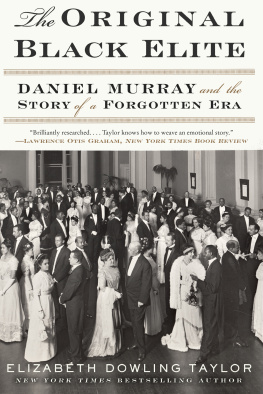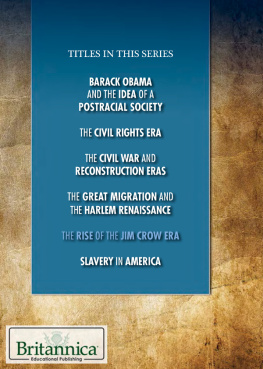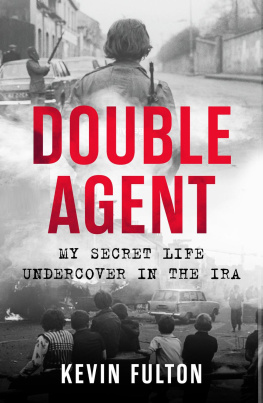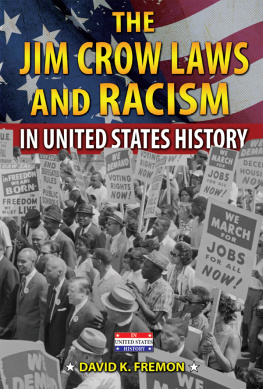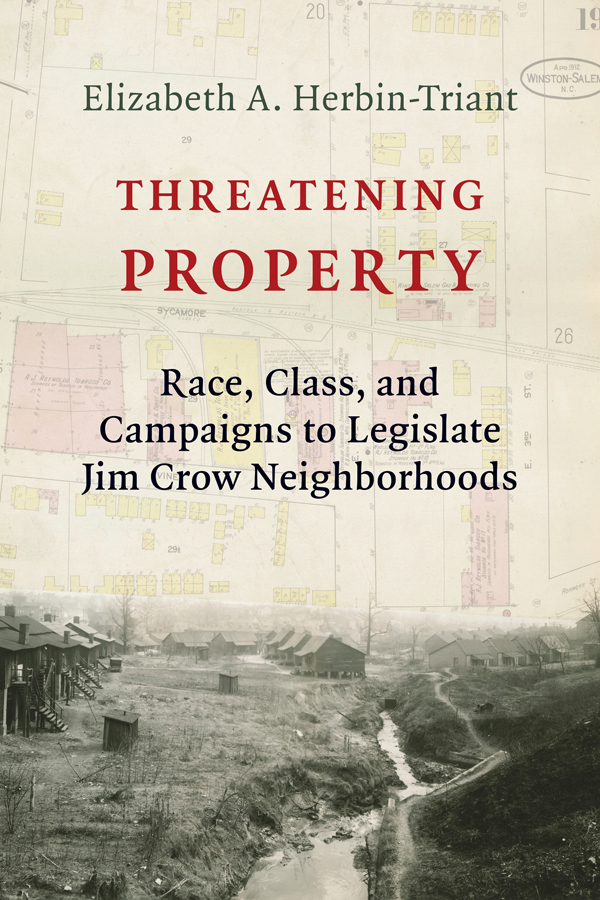Contents
Guide
Pagebreaks of the print version
Threatening Property
Columbia Studies in the History of U.S. Capitalism
Columbia Studies in the History of U.S. Capitalism
Series Editors: Devin Fergus, Louis Hyman, Bethany Moreton, and Julia Ott
Capitalism has served as an engine of growth, a source of inequality, and a catalyst for conflict in American history. While remaking our material world, capitalisms myriad forms have alteredand been shaped byour most fundamental experiences of race, gender, sexuality, nation, and citizenship. This series takes the full measure of the complexity and significance of capitalism, placing it squarely back at the center of the American experience. By drawing insight and inspiration from a range of disciplines and alloying novel methods of social and cultural analysis with the traditions of labor and business history, our authors take history from the bottom up all the way to the top.
Capital of Capital: Money, Banking, and Power in New York City , by Steven H. Jaffe and Jessica Lautin
From Head Shops to Whole Foods: The Rise and Fall of Activist Entrepreneurs , by Joshua Clark Davis
Creditworthy: A History of Credit Surveillance and Financial Identity in America , by Josh Lauer
American Capitalism: New Histories , Sven Beckert and Christine Desan, editors
Buying Gay: How Physique Entrepreneurs Sparked a Movement , by David K. Johnson
Banking on Freedom: Black Women in U.S. Finance Before the New Deal , by Shennette Garrett-Scott
Threatening Property
Race, Class, and Campaigns to Legislate Jim Crow Neighborhoods
Elizabeth A. Herbin-Triant

Columbia University PressNew York
Columbia University Press
Publishers Since 1893
New York Chichester, West Sussex
cup.columbia.edu
Copyright 2019 Columbia University Press
All rights reserved
E-ISBN 978-0-231-54847-2
Library of Congress Cataloging-in-Publication Data
Names: Herbin-Triant, Elizabeth A., author.
Title: Threatening property : race, class, and campaigns to legislate Jim Crow neighborhoods / Elizabeth A. Herbin-Triant.
Description: New York : Columbia University Press, [2019] | Series: Columbia studies in the history of U.S. capitalism | Includes bibliographical references and index.
Identifiers: LCCN 2018044278 (print) | LCCN 2018045069 (ebook) | ISBN 9780231189705 (cloth : alk. paper) | ISBN 9780231189712 (pbk. : alk. paper)
Subjects: LCSH: African AmericansSegregationNorth CarolinaHistory20th century. | Discrimination in housingNorth CarolinaHistory20th century. | North CarolinaRace relationsHistory20th century. | Social classesNorth CarolinaHistory20th century.
Classification: LCC E185.61 (ebook) | LCC E185.61 .H495 2019 (print) | DDC 305.8009756/0904dc23
LC record available at https://lccn.loc.gov/2018044278
A Columbia University Press E-book.
CUP would be pleased to hear about your reading experience with this e-book at .
Cover design: Chang Jae Lee
Cover images: Photo: Undated photograph of housing for black workers in east Winston. Courtesy of the Forsyth County Public Library Photograph Collection. Map: Insurance Maps of Winston-Salem, North Carolina, Sanborn Map Company, 1912. North Carolina Maps, https://web.lic.unc.edu/nc-maps/.
For my father, Robert Russell Herbin
One right after another is being taken away from the colored people, one injustice after another being perpetrated. There has developed in North Carolina the greatest menace yet, a movement which will undoubtedly result in legislation, segregating the Negro on the farm lands, thus giving the lie to [Booker T.] Washingtons advice to his people that if they will only be good and buy land they will be let alone and will flourish.
Oswald Garrison Villard, letter to Robert Russo Moton, 1914
Our Neighbors
To love my neighbor as myself
Ive always longed to do,
And yet I never can succeed:
My neighbor is a Jew.
To love my neighbor as myself
Ive struggled week by week,
I cannot keep this great command:
My neighbor is a Greek.
To love my neighbor as myself,
And not a duty shirk,
Ive prayed, but have completely failed:
My neighbor is a Turk.
To love my neighbor as myself
Ive toiled with all my soul,
But I know why I missed the mark
My neighbor is a Pole.
To love my neighbor as myself
And help him in his need,
I cannot do, though hard Ive tried:
My neighbor is a Swede.
To love my neighbor as myself
I said, I know I can!
I failed, but Ive a good excuse:
He is a colored man.
H. Pearson, published in The Crisis , 1913
Contents
I suppose this book began more than three decades ago at my parents dining room table, where my father, Robert Russell Herbin, would lean back in his chairso far back that he seemed about to topple overand tell vivid tales about our family and his childhood in Greensboro, North Carolina. His father, Robert Lee Herbin, worked on the farm of a well-to-do white man, Russell Hall, caring for milch cows and growing tobacco. My grandmother, Laura Tonkins Herbin (Mama Herbin), ran a small grocery store. While my grandparents (born in 1905 and 1908) did not own their own farm when my father was young, Mama Herbins father, Isaac Pap Tonkins (born in 1870), owned a fairly large one. Along with property, Pap enjoyed considerable influence in his community. Both white and black people would come to him for help with their problems. Often, African American men accused of misdemeanors were released to him, with the understanding that he would keep an eye on them. The influence that Pap wielded had something to do with his being a farm owner. This affected how he viewed himself as well as how others viewed him. The effects of Paps status as a landowner also lasted generations, influencing the ambitions and sense of self of his descendants.
My father spent his childhood in an area that people referred to as Red Hill (named for the color of its soil) curing tobacco, caring for milch cows, and attending services at the Celia Phelps United Methodist Church, of which Pap Tonkins had been one of the founders. He also found ways to entertain himself by, for example, bumping the school bus that his district hired him to drive to Dudley High into buses driven by his classmates, also on their way to school. He attended North Carolina A&T and was president of the schools NAACP. Though he scored high enough to attend the University of North Carolinas dental school, the school was not ready to integrate, and the state subsidized his graduate education at Meharry Medical College in Nashville. Determined to get away from Jim Crow, he moved north.
My fathers stories sparked an interest in the South that stayed with me through the years. Circling back to these stories now, after finishing this book, I realize that Ive been trying to make sense for years of how, after Pap Tonkinss successes, the next generation (my grandparents and their siblings) worked someone elses farm. I did not intend to study the area that my family came fromand this book is in no sense a family historybut the story of middling white backlash against the successes of black southerners somehow brought me back to the North Carolina Piedmont. It has been, in a sense, a homecoming, and one of its pleasures has been getting to visit the final resting places of my relatives when Im in town on research trips. For introducing me to stories about the South, for his deep love of history, and for so much else, I dedicate this book to my father.


